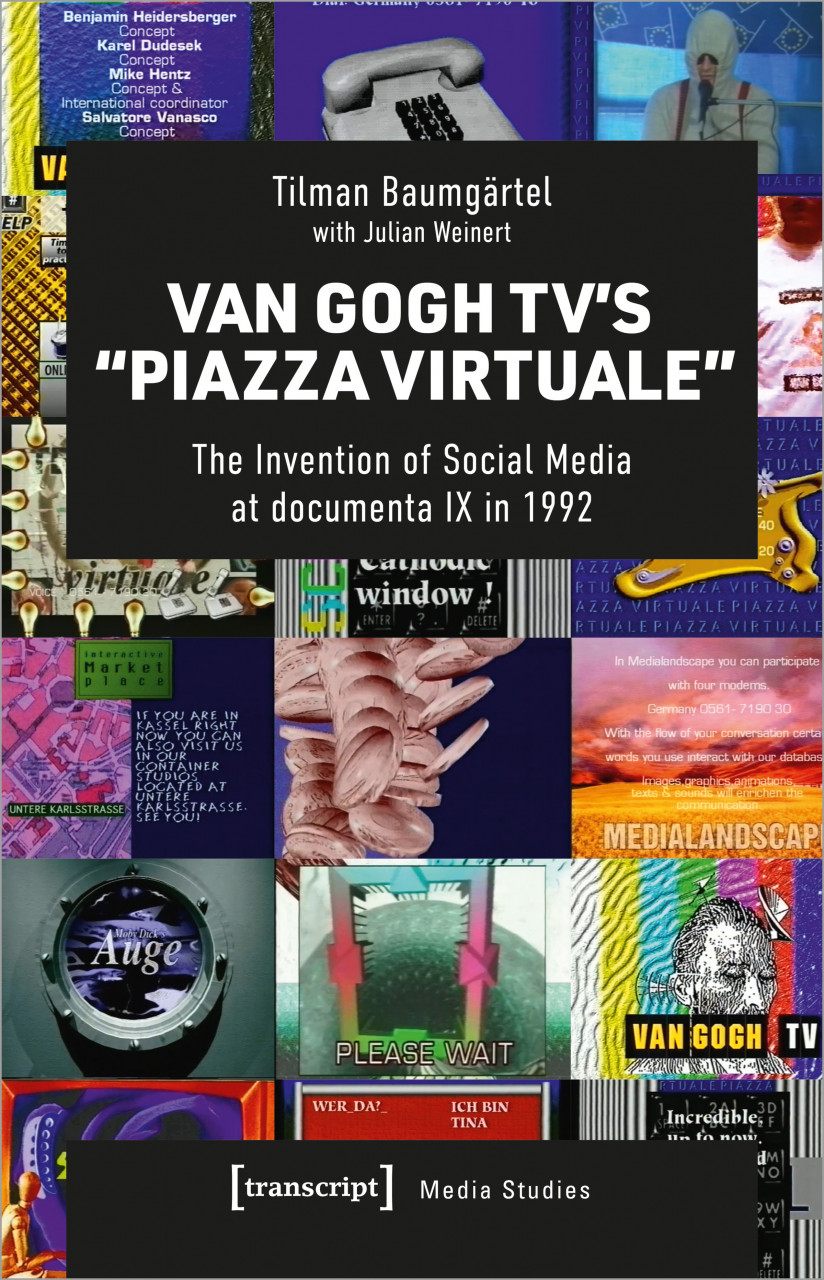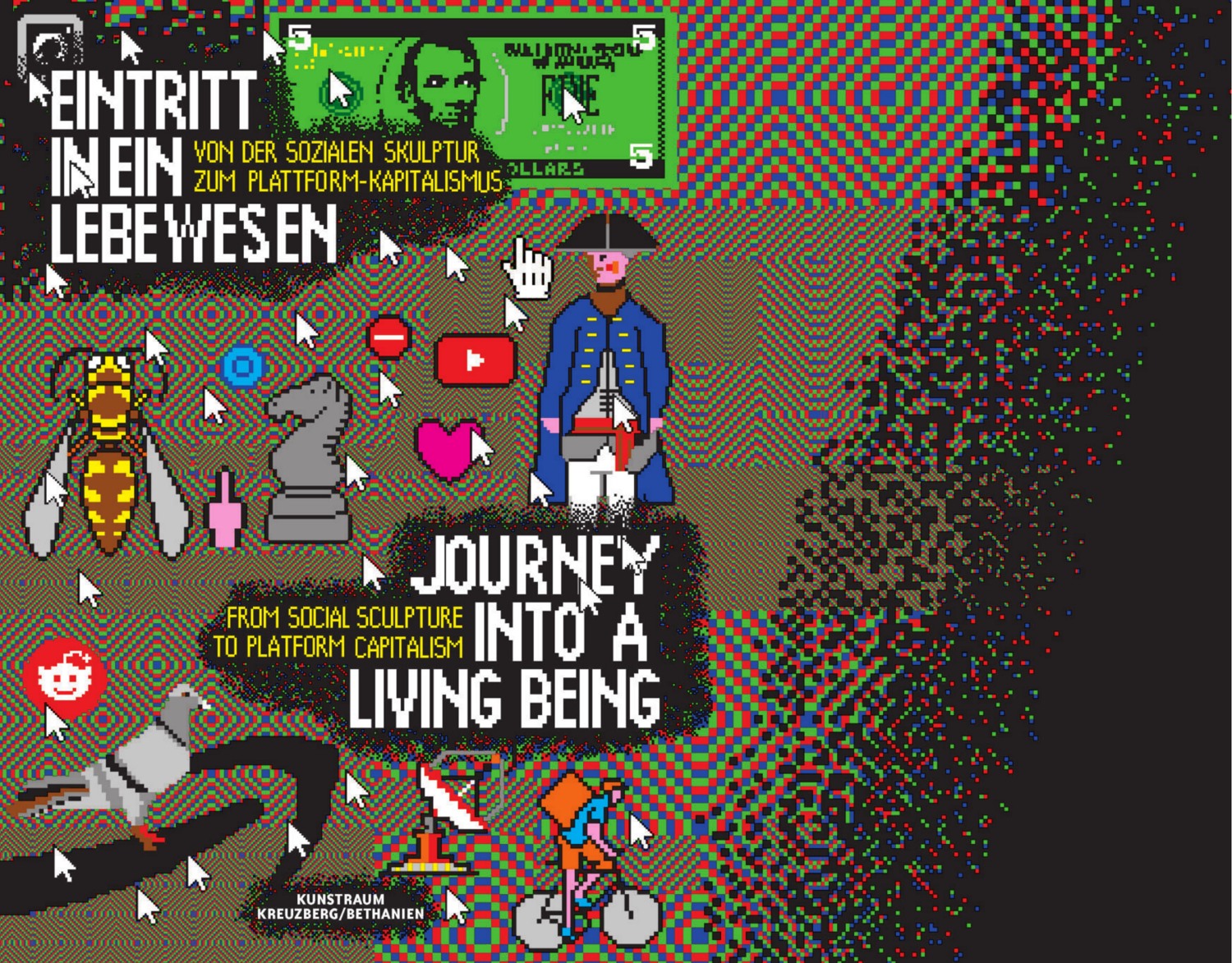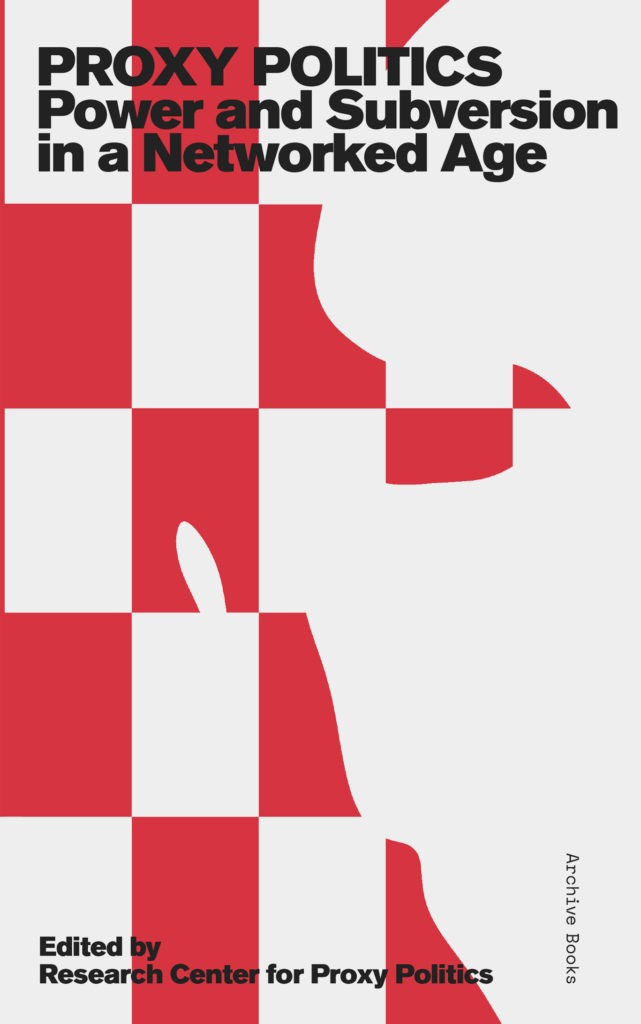Tilman Baumgärtel, Julian Weinert: Van Gogh TV’s Piazza Virtuale: The Invention of Social Media at documenta IX in 1992 (2021)
Filed under book | Tags: · art, art history, internet, media art, social media, television

“Piazza virtuale by the group of artists known as Van Gogh TV was not only the biggest art project ever to appear on television, but from a contemporary point of view the project was also a forerunner of today’s social media. The ground-breaking event that took place during the 100 days of documenta IX in 1992 was an early experiment with entirely user-created content. This is the first book-length study of this largely forgotten experiment: it documents the radicality of Piazza virtuale‘s approach, the novel programme ideas and the technical innovations. It also allows, via QR codes, direct access to videos from the show, which until now have been inaccessible.”
Publisher transcript, Bielefeld, December 2021
Media Studies series, 96
Creative Commons BY-NC-SA 4.0 license
ISBN 3837660664, 9783837660661
231 pages
Research project website
Publisher
WorldCat
PDF, PDF (updated on 2023-7-31)
Comment (0)Eintritt in ein Lebewesen. Von der sozialen Skulptur zum Plattform-Kapitalismus / Journey Into a Living Being: From Social Sculpture to Platform Capitalism (2020) [German/English]
Filed under catalogue | Tags: · art, capitalism, data, internet, platform, privacy, social media, surveillance

“In 1977, Joseph Beuys presented his installation Honey Machine at the Workplace at documenta 6, in which tubes ran into the exhibition rooms, through which honey was pumped. The work symbolized Beuys’ idea of the expanded concept of art and of social sculpture. “Everyone is an artist” is his famous motto –not because everyone can paint, dance or make music, but because we all contribute through our productivity to a collective creativity that can be weighed as real capital and societal potential, to which Beuys ascribed the formula “art = capital.” Honey as the “spiritual nutrition of the cosmos” (Beuys) is the embodiment of this collective creativity.
These days, we deliver our creative “honey” voluntarily to internet companies like Google, Facebook, Twitter, TikTok or Amazon. Computers and smartphones, online speakers and fitness wristbands upload a large portion of our data to these companies’ servers. Even rental bikes and e-scooters collect our location data. Our every click, every Like, every photo posted and every online comment is fuel for the companies of “surveillance capitalism” (Shoshana Zuboff). They use our data to sell advertising, predict our behavior, optimize their algorithms and AI, and to keep competing companies out of the market as much as possible.
The exhibition Journey Into a Living Being takes its name from a lecture Beuys gave on social sculpture at documenta. It traces the conceptual trajectory to the present, in which the internet and social media are replete with offers of creative services, but where only few reap the financial rewards. It brings together artworks spanning forty years with the aim of deciphering what has come to pass between the development of social sculpture and the rise of platform capitalism and the gig economy, and how this process is reflected in art.”
Edited by Tilman Baumgärtel
Publisher Kunstraum Kreuzberg/Bethanien, Berlin, 2020
ISBN 9783000652608, 3000652604
111 pages
Exhibition (18.5-16.8.2020)
WorldCat
PDF (6 MB)
Comment (0)Proxy Politics: Power and Subversion in a Networked Age (2017)
Filed under book | Tags: · art, image, internet, media, networks, politics

“The proxy, a decoy or surrogate, is today often used to designate a computer server acting as an intermediary for requests from clients. Originating in the Latin procurator, an agent representing others in a court of law, proxies are now emblematic of a post-democratic political age, one increasingly populated by bot militias, puppet states, and communication relays. Thus, the proxy works as a dialectical figure that is woven into the fabric of networks, where action and stance seem to be masked, calculated and remote-controlled.
This publication looks at proxy-politics on both a micro and a macro level, exploring proxies as objects, as well as networks as objects. What is the relation between the molecular and the planetary? How to fathom the computational regime? Yet, whilst being a manifestation of the networked age, thinking like a proxy offers loopholes and strategies for survival within it.
The Research Center for Proxy Politics (RCPP) explores and reflects upon the nature of medial networks and their actors. Between September 2014 and August 2017, the center hosted workshops, lectures and events at the Universität der Künste, Berlin, under the auspices of Hito Steyerl’s Lens-based class.”
Contributors: Tom McCarthy, Kodwo Eshun, Goldin+Senneby, Brian Holmes, Nick Houde, Jonathan Jung, Laura Katzauer, Boaz Levin, Mikk Madisson, Doreen Mende, Sondra Perry, Oleksiy Radynski, Robert Rapoport, Hito Steyerl, thricedotted, Vera Tollmann, Miloš Trakilović.
Edited by Research Center for Proxy Politics (Vera Tollmann and Boaz Levin)
Publisher Archive Books, Berlin, October 2017
ISBN 3943620719, 9783943620719
256 pages
via catsoup
Editor
Publisher (archived)
WorldCat
PDF (11 MB)
Comment (0)
